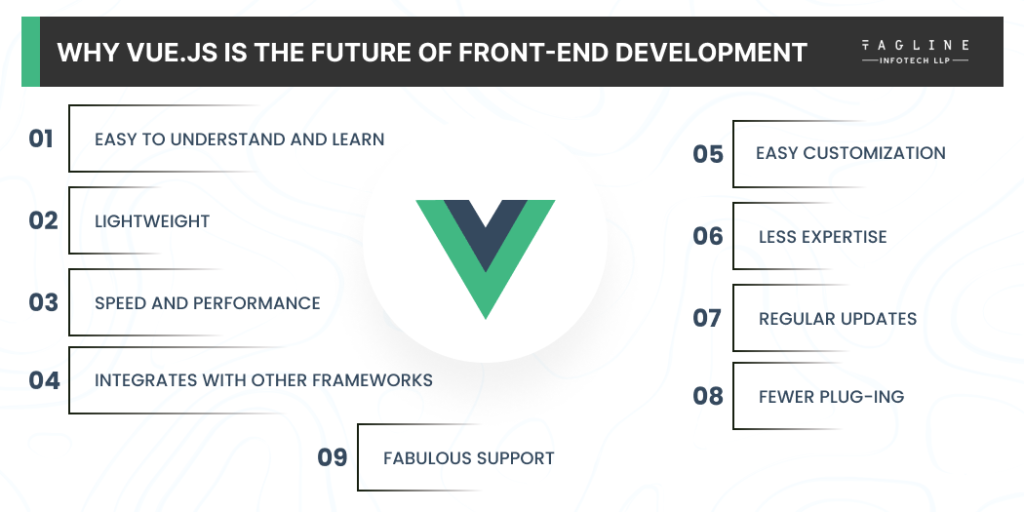News Blast: Your Daily Update
Stay informed with the latest news and trends.
Vue.js Magic: Making Coding Feel Like a Dance
Discover how Vue.js transforms coding into a seamless dance of creativity and efficiency. Unleash your coding magic today!
Unlocking the Rhythm: How Vue.js Simplifies Coding
Vue.js has revolutionized the way developers approach coding by providing a straightforward and intuitive framework that emphasizes simplicity and flexibility. One of its standout features is the Component-based architecture, which allows developers to create reusable components that encapsulate their functionality. This modular approach not only streamlines the development process but also enhances maintainability, making it easier for teams to collaborate on large-scale projects. With features like reactive data binding and a virtual DOM, Vue.js ensures that updates are efficient and seamless, allowing developers to focus on building robust applications without getting bogged down in complex syntax.
Moreover, Vue.js offers an extensive ecosystem of tools and libraries that further simplify the coding experience. The Vue CLI enables developers to quickly scaffold new projects, providing a solid foundation to build upon. Additionally, the Vue Router and Vuex libraries facilitate routing and state management, respectively, ensuring that the architecture remains clean and organized. By leveraging these tools, developers can unlock the rhythm of coding, accelerating their workflow and enhancing productivity. As a result, Vue.js not only simplifies the coding process but also empowers developers to create dynamic and high-performance applications with ease.

Dancing with Data: Mastering State Management in Vue.js
In the world of modern web development, mastering state management in Vue.js is akin to dancing with data. As your application grows more complex, managing the state of various components seamlessly becomes essential for maintaining high performance and user satisfaction. One popular solution is the Vuex library, specifically designed to act as a centralized store for all components within a Vue.js application. With Vuex, developers can effectively manage state through mutations and actions, which facilitate predictable state transitions. This architectural pattern not only enhances code maintainability but also streamlines debugging, enabling smoother collaboration among teams.
Moreover, understanding how to implement effective state management can significantly impact the overall user experience. By leveraging Vue.js's reactivity system alongside Vuex, developers can ensure that changes to shared state trigger automatic updates in the UI, providing a dynamic, responsive feel to the application. To get started, it's crucial to familiarize yourself with the core concepts of Vue.js, such as component hierarchy and data flow, which are foundational for mastering state management. As you delve deeper into this dance with data, you'll discover the power of carefully crafted state management strategies that lead to enhanced application performance and a more polished user experience.
Is Vue.js the Key to Effortless Web Development?
Web development has evolved rapidly in recent years, and frameworks like Vue.js have emerged as frontrunners in simplifying the process. With its intuitive and flexible design, Vue.js allows developers to create interactive user interfaces with minimal effort. Unlike more complex frameworks, Vue's approachable syntax and comprehensive documentation make it easy for new developers to pick up while still offering advanced features for seasoned professionals. By leveraging Vue's reactive data binding and component-based architecture, teams can significantly reduce development time and improve code maintainability.
One of the standout features of Vue.js is its ecosystem, which includes tools that enhance productivity, such as Vue Router for navigation and Vuex for state management. These tools help streamline development processes, allowing developers to focus on building rather than managing boilerplate code. As a result, many teams are discovering that using Vue.js not only leads to faster development cycles but also enhances collaboration among team members. In the competitive landscape of web development, embracing such a versatile framework could indeed be the key to achieving effortless and efficient web solutions.